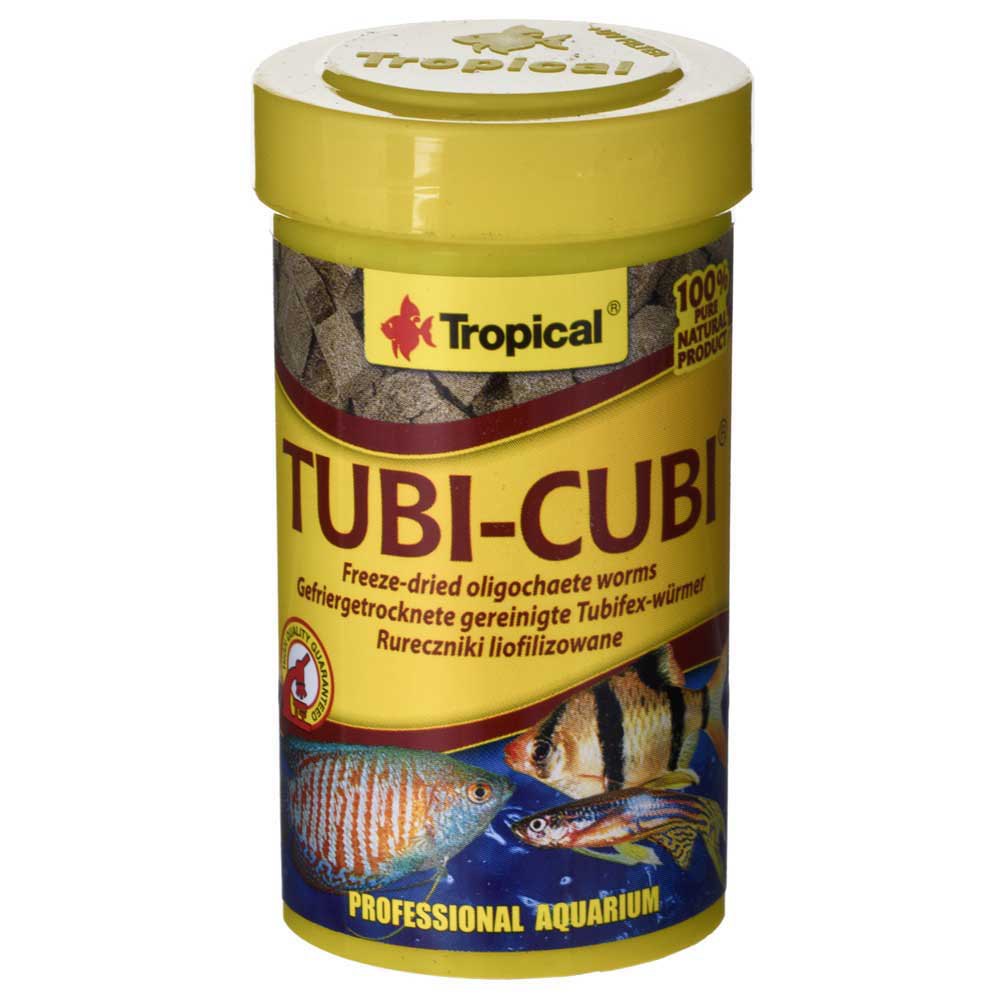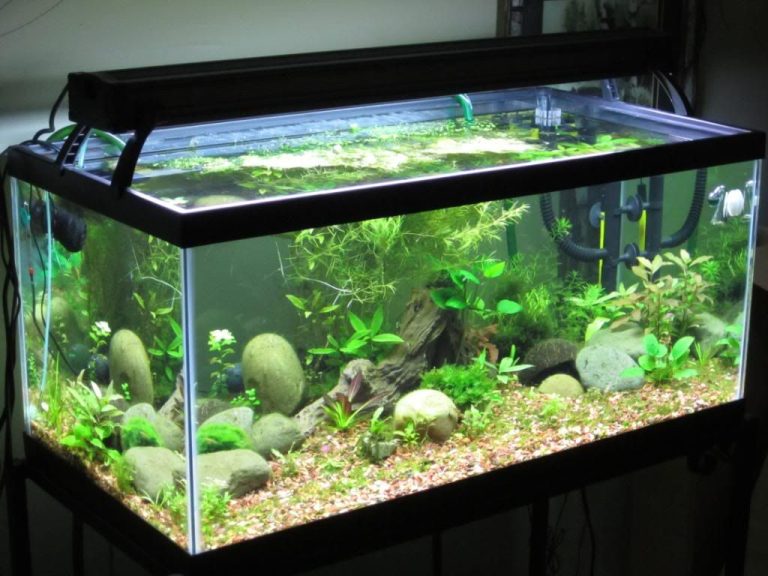Eliminate Tubifex Worms for Good: Simple Steps and Pro Tips.
To get rid of tubifex worms, use a combination of physical removal and chemical treatment. Tubifex worms are commonly found in freshwater aquariums and are often used as live food for fish.
However, if they become overpopulated, they can quickly become a nuisance. These worms are especially troublesome because they are incredibly hardy and can survive in poor water conditions. To get rid of them, it’s important to start with physical removal, such as using a gravel vacuum to suck them out of the substrate.
Additionally, treating the tank with a chemical solution, such as fenbendazole, can also help to eradicate them. It’s important to continue to monitor the tank regularly to ensure that the worms do not return.

Credit: www.tradeinn.com
Introduction To Tubifex Worms Infestation
Tubifex worms, also known as sludge worms, are a common sight in aquariums, fish tanks, and outdoor ponds. However, if left unchecked, these tiny worms can quickly become a nuisance and even pose a threat to your aquatic pets. In this blog post, we’ll go over everything you need to know about getting rid of tubifex worms.
Overview Of The Tubifex Worms Problem
Tubifex worms feed on organic matter and thrive in nutrient-rich environments with stagnant water. They can quickly multiply and form dense colonies, making them difficult to control. Moreover, they create a lot of waste, which can further disrupt the water quality, leading to various health problems among the fish.
Brief Description Of Tubifex Worms And Their Harmful Effects
Tubifex worms are thin, small, and reddish-brown worms that can grow up to an inch in length. They have bristly hairs protruding from their segments, which they use for anchoring in the mud or sand. As they feed on organic matter, they can quickly multiply and create a nuisance by clogging the aquarium filters, pumps, and water outlets.
Moreover, they release an excess amount of ammonia and nitrates, leading to poor water quality, oxygen depletion, and health problems among the fish and other aquatic pets.
Importance Of Dealing With Tubifex Worms Infestation
Dealing with a tubifex worm infestation is essential for maintaining a healthy and thriving aquatic ecosystem. Left unchecked, these tiny worms can quickly multiply and create an environment that’s hostile to the fish and other aquatic pets. More importantly, their excessive waste can lead to the growth of dangerous bacteria, parasites, and fungi, causing various health problems among the fish.
The Significance Of Learning How To Eliminate Tubifex Worms For Good
Learning how to eliminate tubifex worms for good is crucial for keeping your aquatic pets healthy and happy. By following the right methods, you can effectively get rid of these worms and prevent them from coming back. More importantly, you can create a clean and healthy environment that’s suitable for all kinds of fish and other aquatic organisms.
Understanding The Lifecycle Of Tubifex Worms
Detailed Explanation Of The Tubifex Worms Lifecycle.
Tubifex worms are small, red, and segmented worms that predominantly live in the muddy bottoms of streams, rivers, and lakes. These tiny creatures are potential pests for any aquarium owners who desires a clean and pleasant environment for their fish to live in.
To get rid of the tubifex worms, it is vital to understand their lifecycle. These worms go through four key stages of their lifecycle, which are egg, larvae, pupa, and adult.
- The eggs are tiny and exist in cocoons, which are deposited by adult worms in the mud and sand.
- After hatching from the cocoon, the tubifex worm takes on the larvae stage. They feed on decaying organic matter present in their surrounding habitat.
- The pupal stage involves encasing themselves in a cocoon and preparing to transform into adults.
- After a few days in their cocoon, the adult tubifex worm emerges to continue their lifecycle.
How To Recognize The Different Stages Of Tubifex Worms.
Since recognizing the different stages of tubifex worms is crucial for controlling their infestation, you need to look for these signs:
- The eggs appear as tiny translucent cocoons, which snowball and turn brown as they mature.
- Larvae and pupae look similar, but distinguishing them is based on their size. Larvae are smaller than pupae and can only swim in the water layer.
- Adult tubifex worms resemble small red threads, are larger than larvae, and emerge from their cocoons directly into the aquatic environment.
Signs To Lookout For To Know If You Have A Tubifex Worms Infestation.
Detecting tubifex worm infestation is essential to preventing the spread of the parasites within your aquarium, and you can do that by looking for the following:
- Muddy and murky water due to the tubifex worms’ burrowing activity.
- An abundance of small red worms on the bottom of the aquarium.
- Fish in the aquarium will be less active and may show signs of distress from the worm infestation.
To conclude, understanding the lifecycle of tubifex worms is critical to controlling their spread. Recognizing the stages of worm development and signs of infestation can help you enforce appropriate treatment measures.
Preventing Tubifex Worms Infestation
The thought of an infestation of tubifex worms can be horrifying for every aquarium owner. However, with the proper guidelines and precautions, you can avoid this issue. Here are some effective measures to prevent the infestation of tubifex worms in your aquarium.
Top Tips For Aquarium Hygiene And Cleaning
Maintaining hygiene in your aquarium is the most crucial aspect of preventing a tubifex infestation. Here are some top hygiene and cleaning tips to help you:
- Conduct regular cleaning of your aquarium for optimal water quality.
- Remove any dead fish, uneaten food and debris from the aquarium promptly.
- Clean all the equipment before and after every use to maintain hygienic conditions.
- Keep the aquarium filters clean regularly.
- Ensure to cycle the aquarium frequently to maintain an optimal environment.
Preventive Measures To Consider When Dealing With Tubifex Worms
Besides hygiene and cleaning, some effective preventive measures can help you avoid a tubifex worm infestation:
- Avoid overfeeding the fish. Overfeeding can cause food particles to build up in the aquarium and result in a growth of tubifex worms.
- Quarantine any new fish before adding them to the aquarium to prevent the spread of tubifex worms.
- Avoid buying live food from unverified sources since tubifex worms often staple live foods.
- Introduce scavenger fish to your aquarium. They can help to remove the excess food that is not eaten by other fish.
- In case you notice any sign of tubifex worms in your aquarium, isolate and treat immediately with chemicals.
Preventing tubifex worm infestation from spreading is incredibly crucial. With proper hygiene and cleaning practices and appropriate preventive measures, you can prevent this nightmare from happening.
Chemical Treatment
Introduction To Chemical Treatment For Tubifex Worms Elimination
There is no denying that tubifex worms can wreak havoc in your aquarium by polluting the water, damaging the plants, and infecting other aquatic creatures with their harmful bacteria. Several methods can be used to get rid of these worms, but chemical treatment is one of the most effective ways.
This method involves adding certain chemicals to your tank to eliminate the worms and stop their growth in the future. In this section, we will discuss the top chemical products for tubifex worms elimination and provide detailed instructions on how to use them.
Top Chemical Products For Tubifex Worms Elimination
Some of the top chemical products for tubifex worms elimination include:
- Copper sulfate
- Potassium permanganate
- Fluke tabs
Each of these chemicals can be used to eliminate tubifex worms and cleanse your tank of their harmful effects. Here is what you need to know about each of these chemicals:
Copper Sulfate
- Copper sulfate targets parasites and pests in your aquarium, including tubifex worms.
- It works by interfering with the worms’ metabolism, thus causing their death.
- Copper sulfate should be used sparingly, as a high concentration can be harmful to aquatic life.
Potassium Permanganate
- Potassium permanganate is another potent chemical that can eliminate tubifex worms.
- It works by oxidizing organic matter, killing the worms’ eggs, and destroying any bacteria in your tank.
- While it is effective, this chemical can also be dangerous. Always read the instructions carefully before use.
Fluke Tabs
- Fluke tabs are a safe, but highly effective, way to eliminate tubifex worms.
- These tablets contain the chemical praziquantel, which targets harmful parasites and removes them from your aquarium.
- Fluke tabs can be a bit more expensive than other chemicals but are worth the investment due to their effectiveness.
Detailed Instructions On How To Use Chemical Products
Before using any chemical product to treat tubifex worms in your aquarium, you should take the following steps:
- Research the chemical you plan to use and read the instructions thoroughly.
- Test the water in your tank to determine if there are any dangerous levels of nitrate or ammonia.
- Reduce the water level in your aquarium to prevent any chemical overdosing.
Here is a general process for using chemical products to treat tubifex worms:
- Determine the proper dosage of the chemical and measure it out precisely.
- Add the chemical to your aquarium slowly to avoid shocking your fish, plants, and other aquatic life.
- Wait for the chemical to dissolve and let your aquarium sit for a few hours before checking on it.
- Be sure to monitor your tank’s progress carefully, as some chemicals can be harmful if used incorrectly.
With these steps, you can use chemical treatments to successfully eliminate tubifex worms from your aquarium and restore its health and cleanliness.
Manual Removal
Explanation Of Manual Removal Method
If you’re dealing with a tubifex worm infestation, manual removal may be the most effective solution. It involves physically removing the worms from your aquarium.
Equipment And Tools Needed For Manual Removal
Before getting started, you’ll need a few supplies:
- Pair of tweezers
- Container for holding the worms
- Gloves (optional but recommended)
Detailed Instructions For Effective Manual Removal
Follow these steps to manually remove tubifex worms:
- Start by turning off any pumps or filters. This will prevent the worms from being suctioned into the filter system.
- Using the pair of tweezers, carefully remove the visible worms from the aquarium. Try to remove as much of the worm as possible, including the head and tail ends. Avoid crushing or breaking the worm apart, as this can release eggs or other worm parts back into the water.
- After removing the worms, place them in a container with water. This will help prevent them from drying out and escaping.
- Repeat this process on a regular basis to remove any remaining worms from the aquarium. While it may be time-consuming, manual removal is essential for preventing the worms from reproducing and spreading further.
- Once you have removed all of the visible worms, perform a gravel clean to ensure no further worms remain in the substrate.
Overall, manual removal is a tedious but effective method for getting rid of tubifex worms. By following these steps and regularly checking for worms, you can keep your aquarium clean and healthy for your aquatic pets.
Post-Treatment Care And Maintenance
Importance Of Post-Treatment Care And Maintenance
After eliminating tubifex worms from your aquarium, it’s essential to take measures to ensure that these pests don’t return. Neglecting post-treatment care and maintenance can undo all your efforts and lead to a re-infestation. Follow these steps to keep your tank free from tubifex worms.
Steps To Take After Eliminating Tubifex Worms
- Clean your aquarium: Start by cleaning your aquarium thoroughly. Remove any leftover food and debris from the tank, filters, and substrates. Scrub the walls of your tank, filter, and heater using a scraper, sponge or brush to get rid of any remaining debris.
- Change the water: After cleaning, do a 20-30% water change to remove any remaining worms or eggs. This is a crucial step since tubifex worm eggs and cysts can be resilient to other treatment methods.
- Monitor the water quality: As tubifex worms generate a considerable amount of waste, they can significantly affect the water quality of your aquarium. Make sure to test the water regularly for ammonia, nitrites, and nitrates. Proper water quality ensures the health and safety of your aquarium inhabitants.
- Introduce beneficial bacteria: Include beneficial bacteria to maintain a healthy microbial balance in the aquarium environment. Beneficial bacteria help break down organic waste, fish waste, and leftover food.
Preventive Measures To Avoid Re-Infestation
- Quarantine new fish: Always quarantine your new fish for at least two weeks before introducing them into your aquarium. This helps detect any potential tubifex worm infestation, preventing it from spreading to other fish.
- Avoid overfeeding: Overfeeding can lead to food debris that can accumulate at the bottom of your tank, creating a breeding ground for tubifex worms. Ensure you provide sufficient food for your tank inhabitants, but avoid excess feeding.
- Maintain proper aquarium hygiene: Proper hygiene includes regular cleaning, water changes, and filter maintenance. This helps prevent debris and food debris from accumulating, creating an optimal environment for tubifex worms to thrive.
- Use preventive treatments: Consider using preventive treatments such as snails, clams, and fish that feed on tubifex worms. These organisms help to keep populations under control and can prevent re-infestation.
By following these steps, you can keep tubifex worms at bay in your tank. Be proactive in maintaining aquarium hygiene, and you’ll have a pest-free tank while creating a healthy environment for your aquatic pets.
Frequently Asked Questions On How To Get Rid Of Tubifex Worms
How Do Tubifex Worms Affect Aquariums?
Tubifex worms can quickly reproduce and overpopulate an aquarium, leading to poor water quality, increased algae growth, and potential harm to fish.
What Are The Signs Of A Tubifex Worm Infestation?
Signs of tubifex worm infestation include cloudy or foul-smelling water, increased algae growth, and fish with red gills or lethargic behavior.
How Do I Get Rid Of Tubifex Worms In My Aquarium?
Removing excess food and debris, using a gravel vacuum, and adding a predator fish can help control a tubifex worm infestation. Complete eradication may require chemical treatments.
Can Tubifex Worms Harm My Fish?
Large populations of tubifex worms can deplete oxygen levels in aquarium water and cause harm to fish. Additionally, fish may contract parasites from eating the worms.
How Do Tubifex Worms Enter My Aquarium?
Tubifex worms can enter an aquarium through live food, contaminated plants or decorations, or as hitchhikers on new fish or equipment.
How Can I Prevent A Tubifex Worm Infestation?
Prevent a tubifex worm infestation by properly cleaning and quarantining new fish and equipment, avoiding live food from questionable or untrusted sources, and maintaining good aquarium hygiene practices.
Conclusion
As we conclude this article, getting rid of tubifex worms from your aquarium requires a proactive approach. The key takeaway is to keep your tank clean and well-maintained to prevent their growth. Ensure that you feed your fish a balanced diet and avoid overfeeding them as this can lead to a buildup of waste which is ideal for the worms.
Additionally, you can consider introducing natural predators like assassin snails or loaches to your tank. It’s crucial to be cautious when treating your tank using chemicals as some can harm the beneficial bacteria and create an imbalance in your tank.
Remember to quarantine any new plants or fish before adding them into your tank to prevent the introduction of tubifex worms. Following these tips will help you have a healthy and thriving aquarium environment, free from nuisance creatures like tubifex worms.






